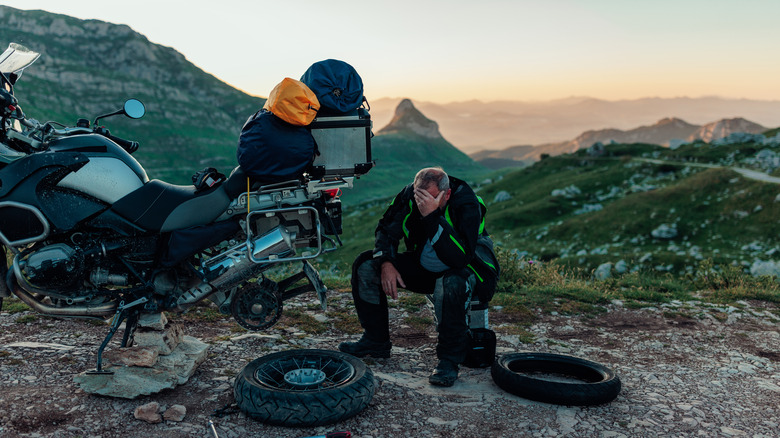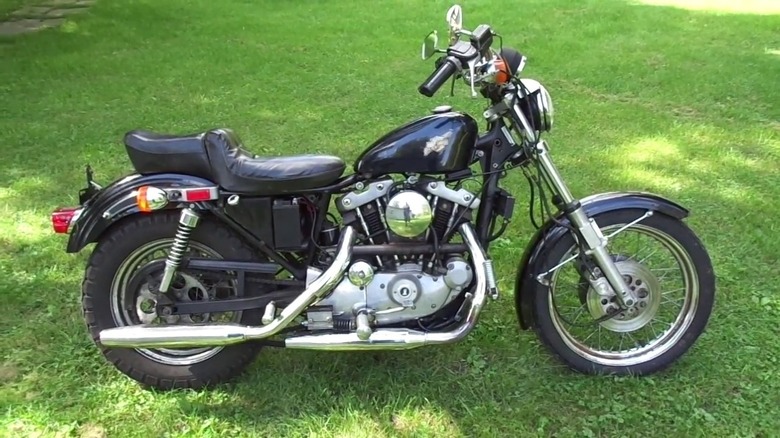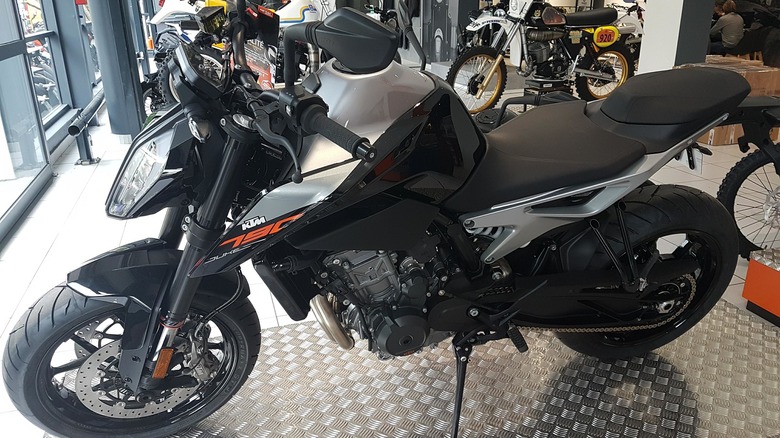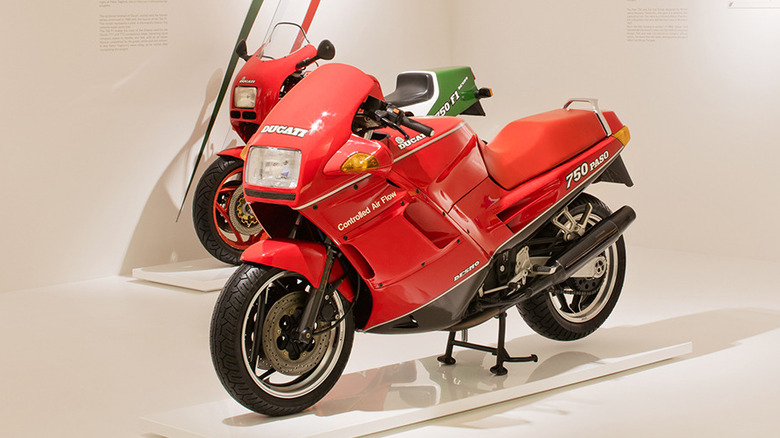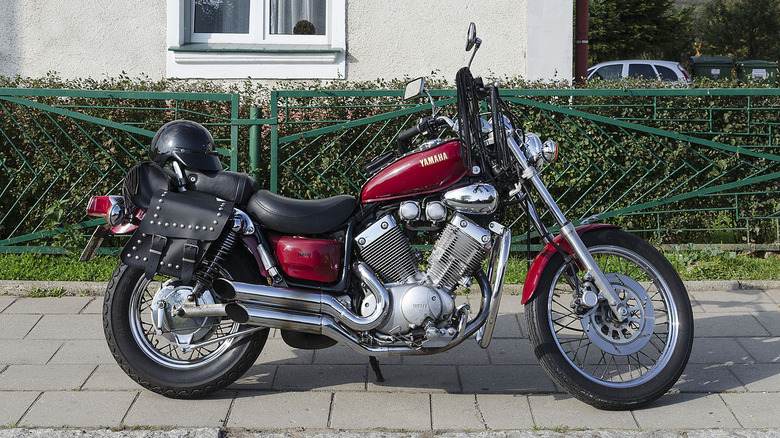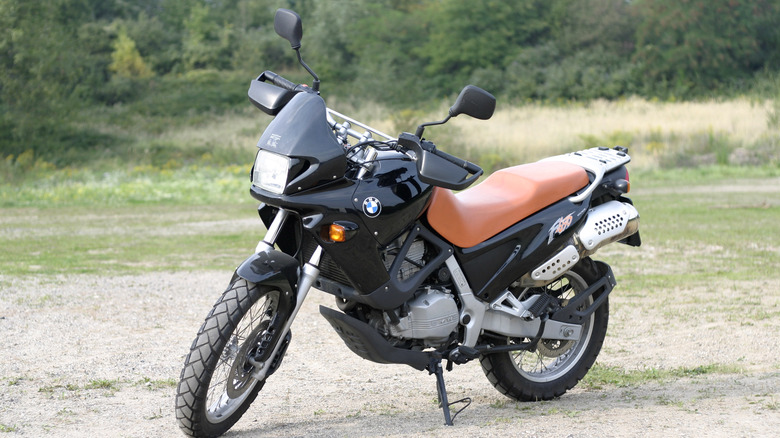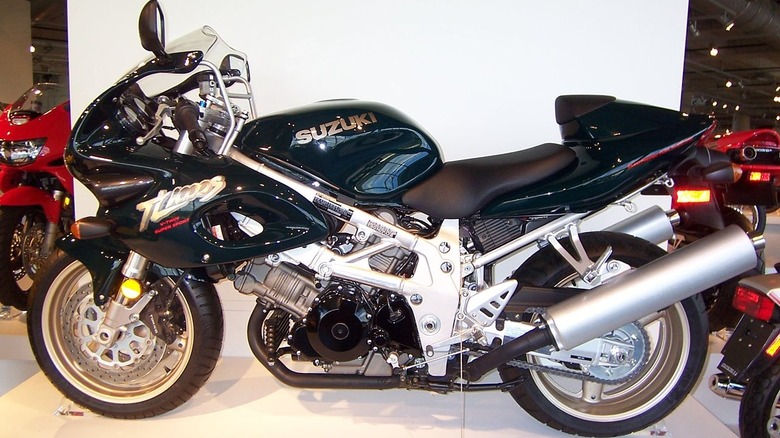6 Of The Most Unreliable Motorcycles Ever Built
It should be relatively easy to choose a reliable motorcycle nowadays, and logic dictates that you can count on brand name recognition to help narrow down your choices. Reputable motorcycle brands such as KTM, Yamaha, and Harley-Davidson should be safe options, right? Well, that isn't always the case, as even the best in the business can produce some absolute clunkers. The reasons for such monumental misses are varied. Some attempted motorcycle innovations wound up being downright terrible. In other cases, companies simply lacked proper planning and didn't foresee the potential issues ahead.
Whatever the reason, these infamous motorcycles managed to get the green light and have since become known within the industry for all the wrong reasons. If you're in the market to buy, it's worth it to run down some of the most reliable motorcycles ever built, but it's also good to know which classic models to avoid entirely.
1980 Harley-Davidson Sportster 1000
While Harley-Davidson is a brand that is widely respected nowadays, the manufacturer hit a rather rough patch in its history during the 1970s and early 1980s. During this period, Japanese sportsbikes were becoming popular in the US due to their lower cost and higher performance than the all-American classic, and it didn't help that the company had recently been taken over by the AMF corporation — a business known for producing such varied goods as nuclear launch systems, bowling equipment, and cigarettes.
Under AMF management, Harley Davidson's reputation took a further dive with the 1980 Sportster 1000. Weighing in at 529 lbs, the 997-cc V-twin engine had a power output of only 55 HP — a ludicrously low figure for a liter bike, even in 1980.
The Sportster was plagued with reliability and build quality issues, which were often exacerbated by questionable design choices. While owners were irritated by minor issues such as excessive vibration and electrical gremlins, the starter motor was notoriously unreliable, and would fail to turn the engine over.
As the 1980 model did not have a kick start, riders were forced to either wait for rescue by the side of the road or bump-start their bikes by running alongside them and then engaging the clutch. Add a high price tag to the package, and you have one of the most unappealing Harley-Davidson motorcycles in existence.
2018 KTM Duke 790
While KTM is generally a trusted brand in the motorcycle industry with their great off-road and adventure bikes, they are certainly not immune from making the occasional blunder.
Despite having an impressive 799 cc parallel twin-cylinder engine that boasts a toasty 105 HP and 87 Nm max torque, the KTM Duke 790 suffered several production problems with the first generation models that kept it from reaching its full potential, and instead, made it a staple in motorcycle repair shops.
These issues were most prevalent with the earlier releases, and include coolant and oil leaks, both of which led to either overheating or engine failure if left unchecked. Such issues with the 2018 and 2019 KTM Duke 790 left a sour taste in owners' mouths, as these problems often appeared within the first few of months. A misfire by KTM at worst and a divisive motorcycle with riders at best, the KTM Duke 790 certainly did not meet initial expectations.
[Featured image by 28pg via Wikimedia Commons | Cropped and scaled | CC BY-SA 4.0]
1986 Ducati Paso 750
Ducati motorcycles are known for their style, speed, and prowess on the track, although, like many Italian bikes of a certain vintage, they also have a reputation for inconsistent quality control. The Ducati Paso 750, was first introduced in 1986, and came with revolutionary design features that looked cool on paper but caused major reliability problems on the road. Gorgeous aerodynamic looks aside, Ducati opted to equip the Paso 750 with a 750-cc L-twin engine with 72.5 HP and a max torque of 70 Nm. It was a good enough engine, but the rear cylinder head was rotated 180 degrees, and its placement required a fuel pump that would flood the Weber dual-throat carburetor at low speed. While this wouldn't cause a problem on the racetrack or highway, it meant the Ducati would often stall when bimbling around urban areas.
The Paso 750 was one of the first fully-faired road bikes ever mass produced — hitting the road a year before Honda's CBR1000F Hurricane. The fairing completely enclosed the engine and other components, reducing airflow, and increasing the risk of overheating, which this motorcycle certainly suffered from regularly.
The Ducati Paso 750 may have looked amazing, but its focus on appearance rather than performance made it one of the most unreliable and worst-selling motorcycles from Ducati.
1980s Yamaha Virago XV535
Owners of the Yamaha Virago XV535 went through some migraine-inducing troubles, especially with early 1980s models, due to how susceptible the bike was to electrical malfunctions. The most common problems were with their charging and ignition systems. Electrical wiring on the XV535 was reputedly patchy, sometimes leading to erratic performance, difficulty starting the bike, and issues with the lights. The XV535 also suffered with carburetor issues, and jets that seemed especially prone to clogging.
When you have a motorcycle that tends to spend more time at the mechanic than in your garage or on the road, the realization that you've invested in the wrong bike starts creeping in. Fortunately, Yamaha managed to address a lot of the issues going forward, up until it was retired and replaced by the Yamaha V-Star.
[Featured image by Jacek Halicki via Wikimedia Commons | Cropped and scaled | CC BY-SA 4.0]
Pre-2000 BMW F650 Funduro
While the F650 Funduro has now built a rather reputable standing as a solid adventure motorcycle, it didn't start as such, as it stumbled out of the gate during its debut in 1993. One of the biggest issues that affected the early F650 Funduro models was due to the under-seat voltage rectifier overheating. This could cause poor performance, stalling, spluttering, blown bulbs, and misfires — leading amateur mechanics to move the unit to locations with better airflow for cooling.
Steering head bearings were known to drain and dry out thanks to the wrong type of grease being used, resulting in an unpredictable steering response — which is the last thing you want either when riding on the road or when navigating through rough terrain.
BMW made sure to rectify these flaws in the succeeding years of the F650's production, and nowadays, the Funduro is a pretty well-rounded adventure motorcycle with a decent reputation. Just save yourself the headache and stay away from pre-2000 models.
[Featured image by Frank G. Leuderalbert via Wikimedia Commons | Cropped and scaled | CC BY-SA 2.5]
1997 Suzuki TL1000S
The Suzuki TL1000S was an overhyped motorcycle that wound up being dragged down by several glaring issues. While it had an impressive engine, a 996cc V-twin putting out 125 hp and 103 Nm (75.9 lb/ft) torque, the rear suspension was a constant problem. The issue stemmed from Suzuki opting for a right-side-mounted spring with a rotary-style damper. This rear shock design led to major overheating problems, which also often degraded the rotary damper quickly.
Combine that unnecessarily complex rear shock prone to overheating with a powerful V-twin engine, and you can see why this bike became known for its problems. Other aspects of the bike pointed to poor build quality as well, with riders frequently complaining about dodgy injectors and unreliable electrics. The myriad problems that kept popping up with the TL1000S not only made it unreliable, it could be straight-up dangerous on the road. The 1997 Suzuki TL1000S was a fumble for the company, and it only lasted four years after its debut before Suzuki quietly swept it under the proverbial rug. Despite a relatively decent engine, one major design flaw – and a host of smaller ones — doomed the TL1000S series to an early grave.
[Featured image by Mike Schinkel via Wikimedia Commons | Cropped and scaled | CC BY-SA 2.0]
